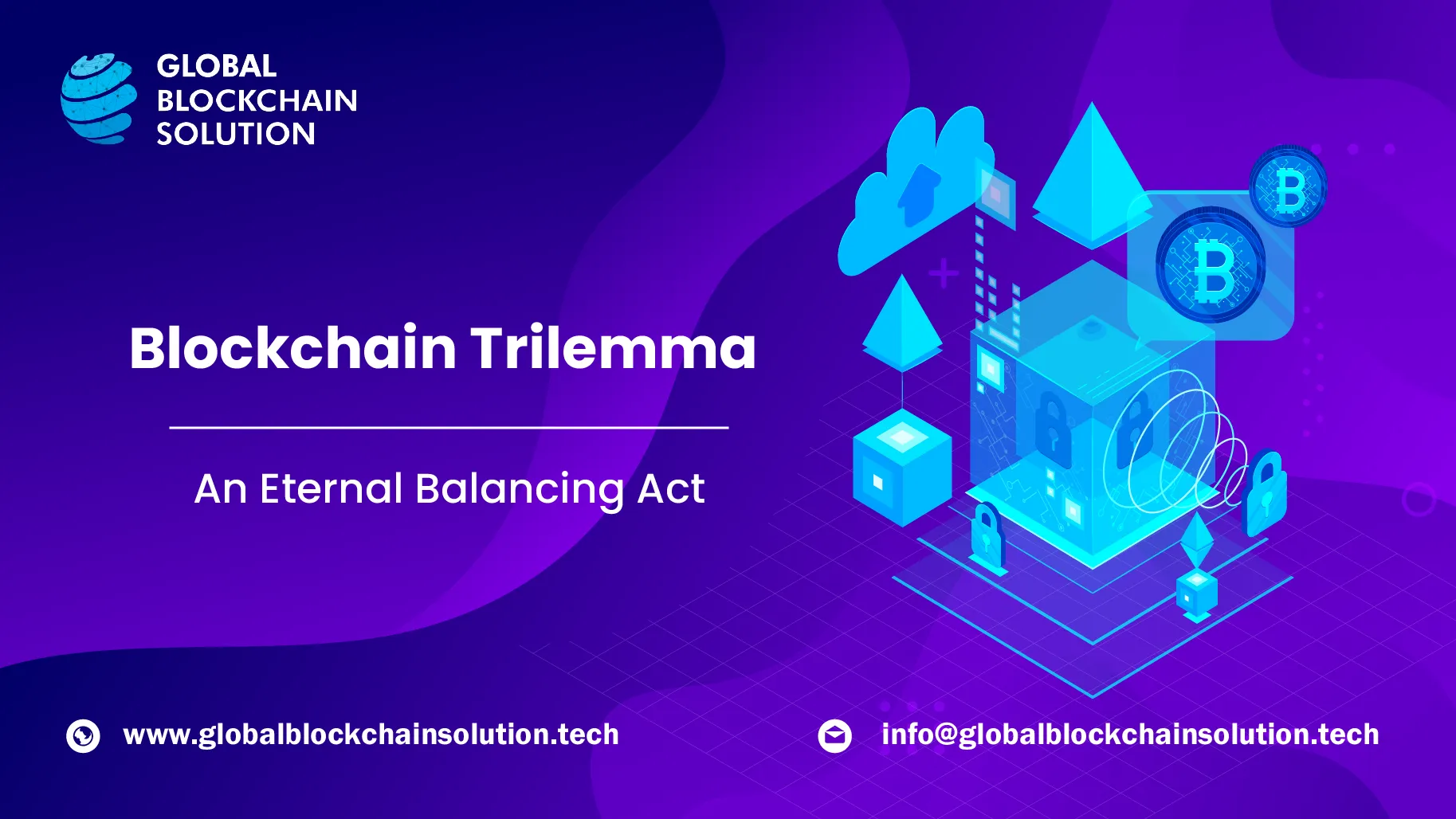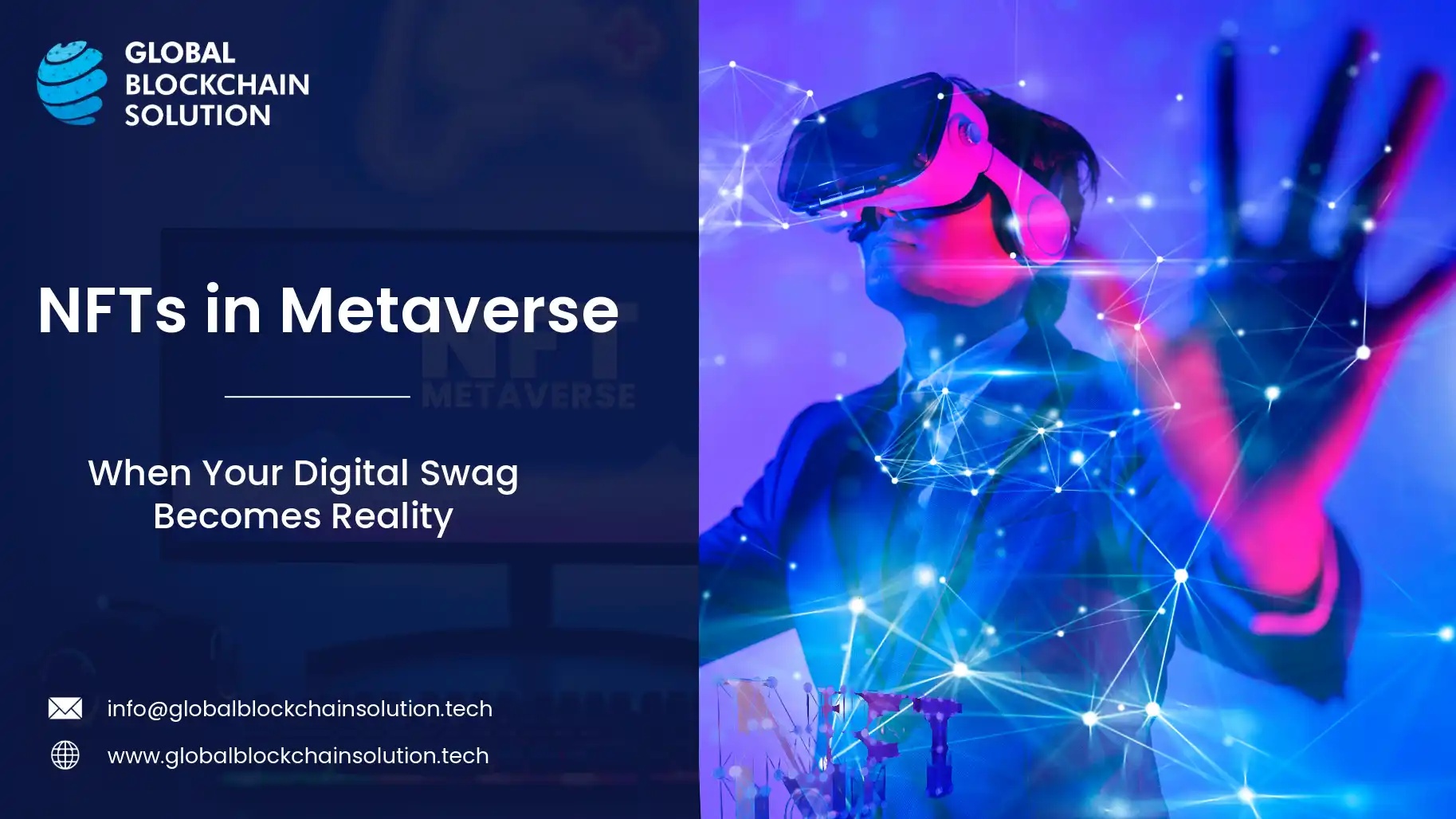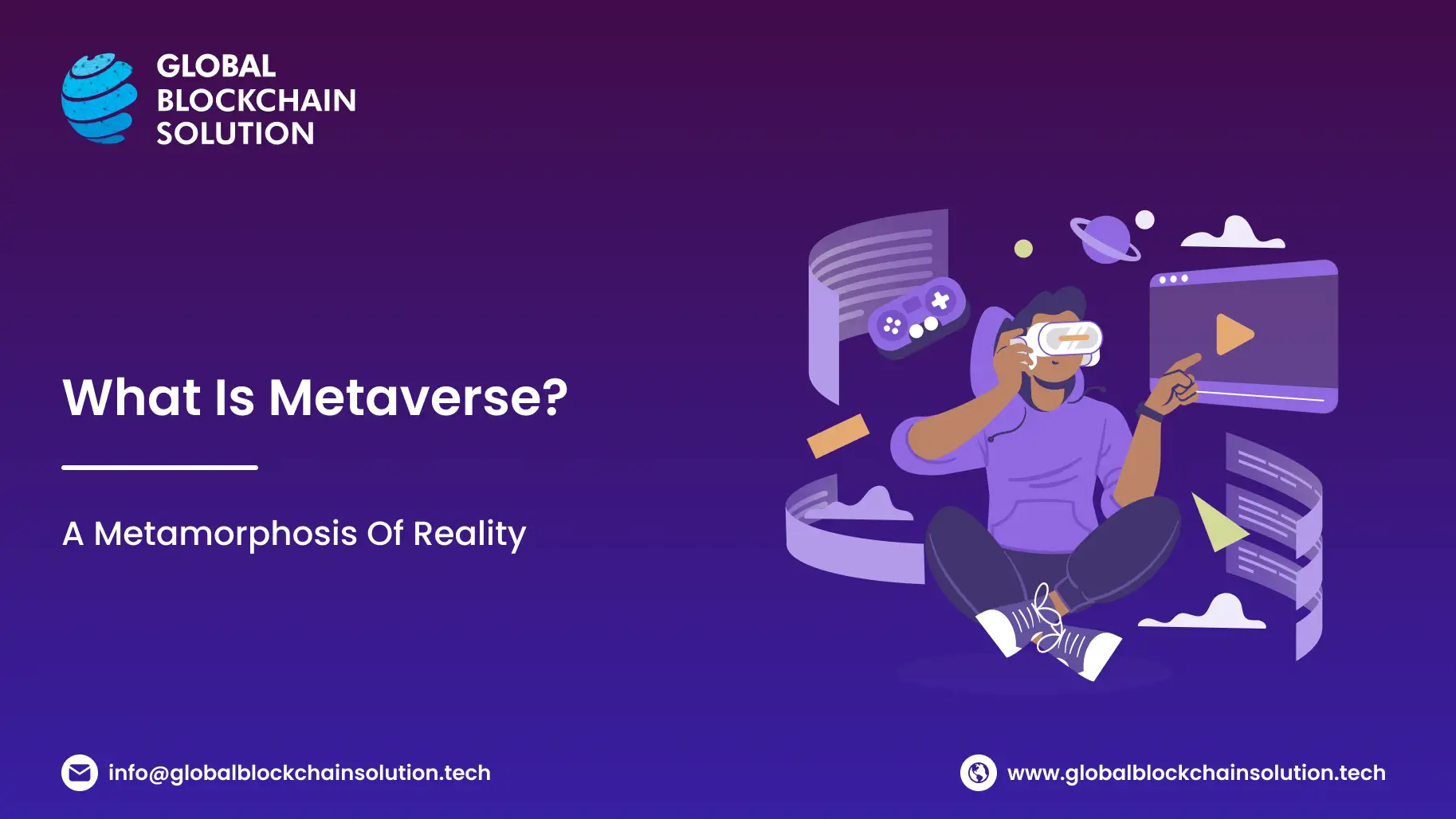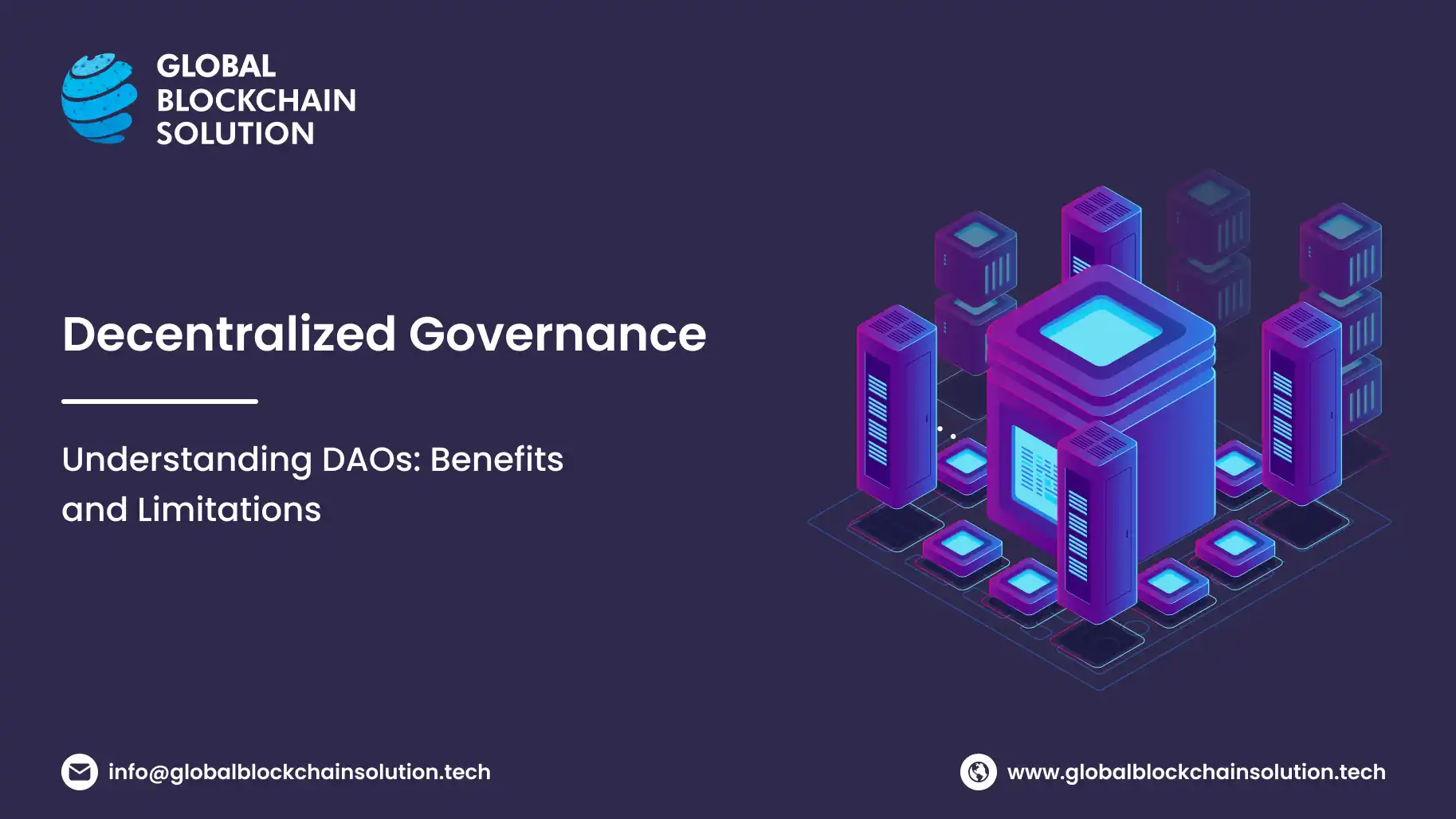Imagine a world where you could send money instantly while ensuring it was completely secure and decentralized. A payments network as fast as Visa, as secure as Fort Knox, and as decentralized as Bitcoin. This blockchain utopia could revolutionize finance and business.
But there's a catch – it cannot exist!
Not yet, at least. You see, blockchain technology faces an intriguing predicament known as the "blockchain trilemma." Popularized by Vitalik Buterin, the blockchain trilemma states that blockchains can only optimize for two of three factors – decentralization , security, and scalability . It is an eternal balancing act, where improving one aspect results in a tradeoff with the others.
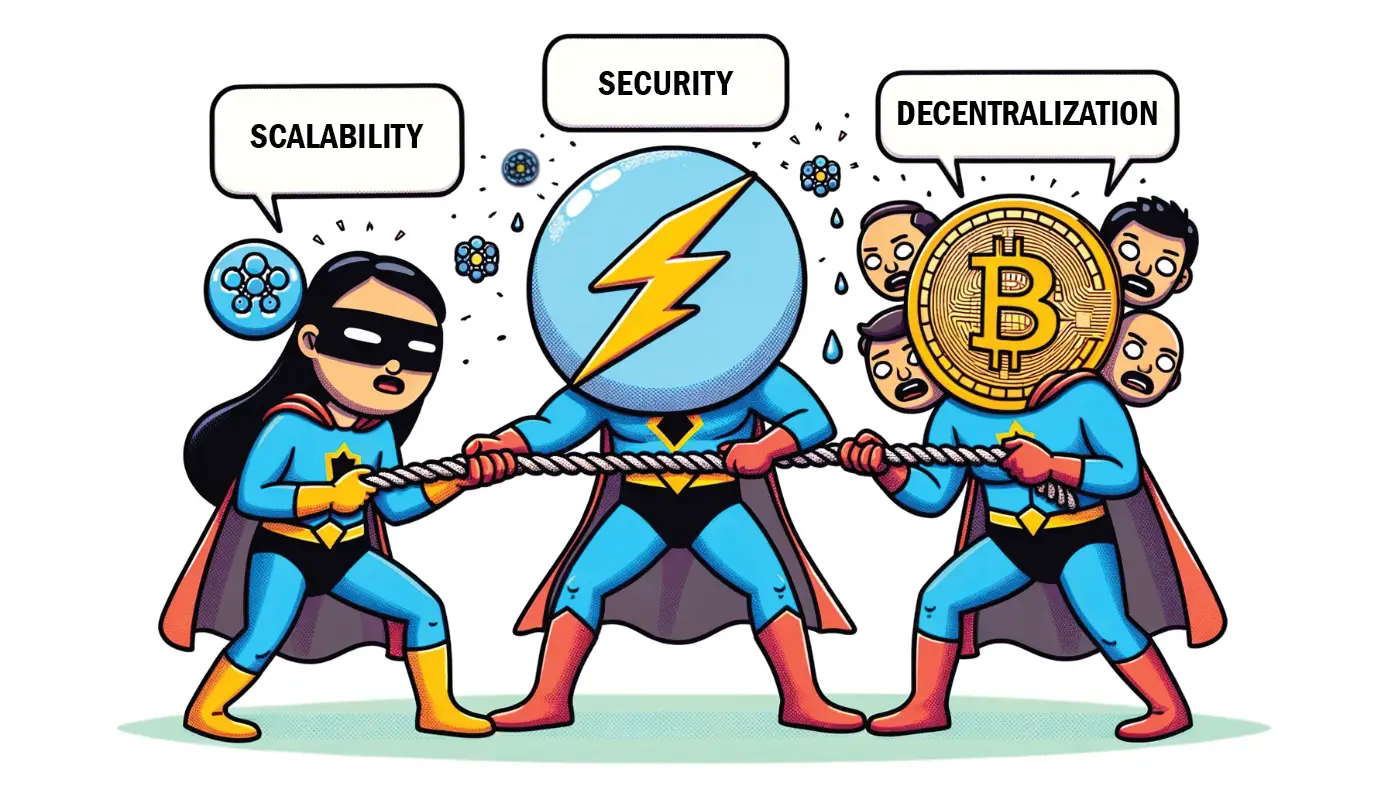
In today’s blog, Global Blockchain Solution will talk about what is blockchain trilemma, why is it important, and potential ways to navigate or even solve it. Grasping these nuances can help you make informed decisions when it comes to investing in, developing, or implementing blockchain solutions.
This Article Contains:
Blockchain Trilemma: What is it?
⮊ How did Blockchain Trilemma come to be?
To truly understand the trilemma, it’s essential to journey back to the foundational principles that birthed blockchain technology.
Also Read: Exploring the Evolution of Blockchain: A Journey from 1982 to Present
At the heart of blockchain's inception was the dream of decentralization. Early blockchain proponents envisioned a world without intermediaries, where peer-to-peer transactions could occur without the need for central authorities like banks or governments.
Building on the advances of his predecessors, Satoshi Nakamoto’s creation of Bitcoin was the first significant stride in this direction. His distributed ledger, powered by a decentralized network of computers, symbolized a radical departure from traditional centralized financial systems that relied on centralized entities.

But as Bitcoin grew in popularity and more transactions occurred on its network, it became evident that maintaining its decentralized ethos came at a price. This price was the trade-off between decentralization and the other two pillars: security and scalability.
⮊ Focus on security weighs on blockchain scalability
Security was paramount for the decentralized financial system to gain trust and widespread adoption. Blockchain needed to be resilient against wide-ranging threats, both internal (like double-spending) and external (like cyber-attacks).
The Proof of Work (PoW) consensus mechanism employed by Bitcoin and many other early blockchains was a solution to this challenge. PoW made it computationally expensive and practically infeasible for any single entity to take over 51% of the network , thus ensuring security.
Also Read: Centralization vs Decentralization: What is Decentralization in Blockchain?
But then came the realization of the scalability issue. As more individuals and entities started to use Bitcoin, the network struggled to process transactions quickly. This was not just a Bitcoin problem; other emerging blockchains faced similar challenges. The decentralized and secure nature of these blockchains meant that every transaction needed validation from multiple nodes, slowing down the entire process.

Enter Ethereum, which introduced the concept of smart contracts and decentralized applications (DApps) to the blockchain world. While it enhanced the versatility of blockchains, it also accentuated the trilemma. The Ethereum network, with its added complexity, faced even more pronounced scalability issues than Bitcoin. Since then, blockchain experts have been trying hard to master this beast – with some degree of success.
⮊ Why is Blockchain Trilemma important?
A well-decentralized blockchain’s wide distribution presents challenges to its scalability. For a transaction to be added to the blockchain, the majority of nodes must validate and agree on its legitimacy. With more nodes in the mix, the consensus process can become slower, especially when the network gets congested. It's a bit like having a committee decide on every single decision in a process: while it might ensure more thorough vetting, it can significantly slow things down.
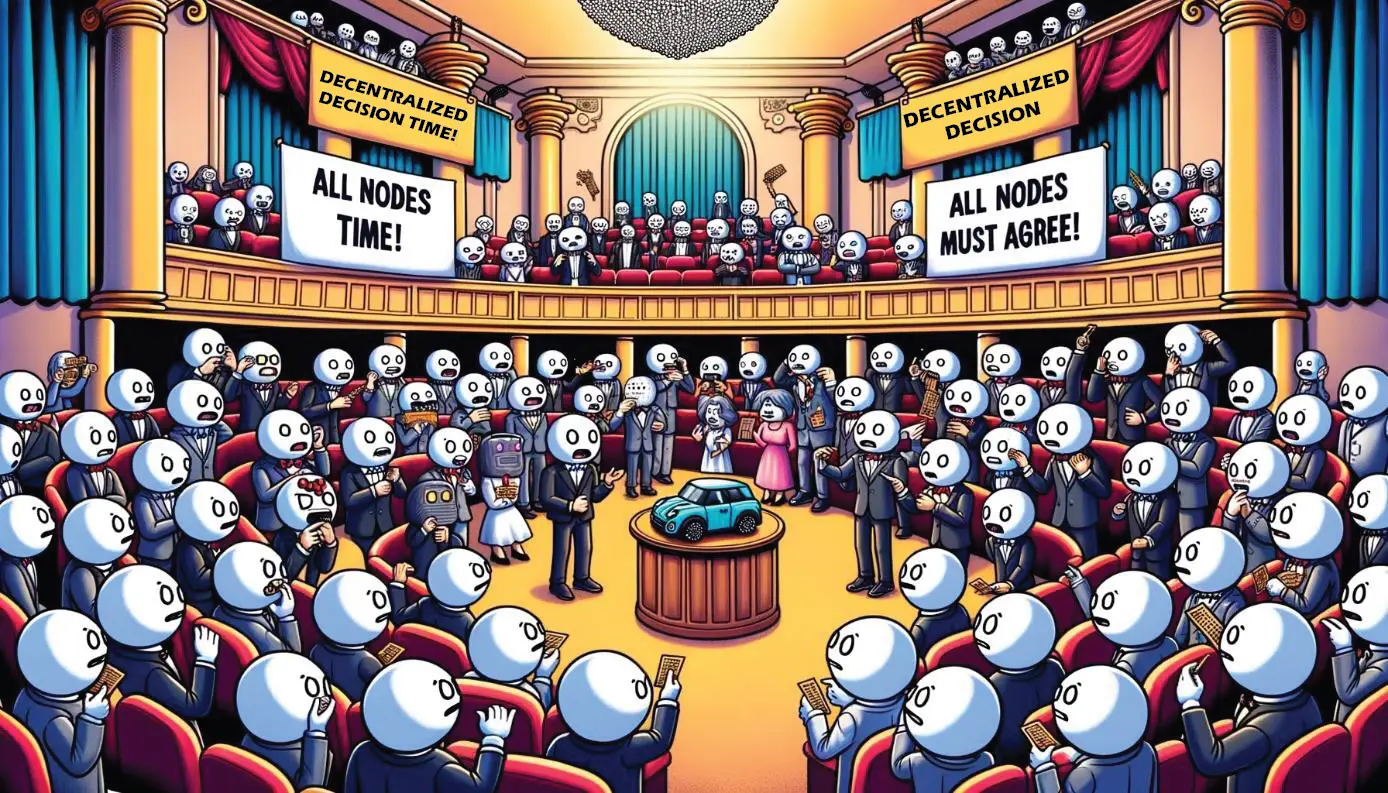
Now, consider a blockchain that wishes to prioritize speed or blockchain scalability. One way to achieve faster transaction times is by reducing the number of nodes that validate each transaction. However, doing so effectively reduces decentralization. Fewer nodes making the decisions can lead to centralization of authority, thereby the network becomes more vulnerable to attacks or manipulations, ultimately decreasing its security.

Again, increasing the size of each block to allow more transaction processing can also improve the blockchain scalability. However, this also can lead to centralization as only powerful nodes can then participate in validation.
The complexity of ensuring all three is highlighted in the ongoing debates and challenges around potential solutions. The blockchain community continually experiments with novel consensus algorithms, architectural modifications, and even completely new blockchain designs in hopes of finding that sweet spot where all three can coexist harmoniously.
How to Solve the Blockchain Trilemma
Before we begin, it’s important to understand that the blockchain trilemma is not 100% solvable. We can, however, optimize it to a fair degree as per our unique needs and priorities.
Here are various techniques to solve individual components of the trilemma.
➣ Decentralization
Incentive Structures for Decentralization
Blockchain protocols use incentive structures like crypto rewards and staking mechanisms to encourage more nodes to join the network and participate in transaction validation and consensus. By providing economic incentives, the network can become more decentralized as more users operate nodes due to the potential for profit or rewards. A wider base of nodes makes the network more distributed.
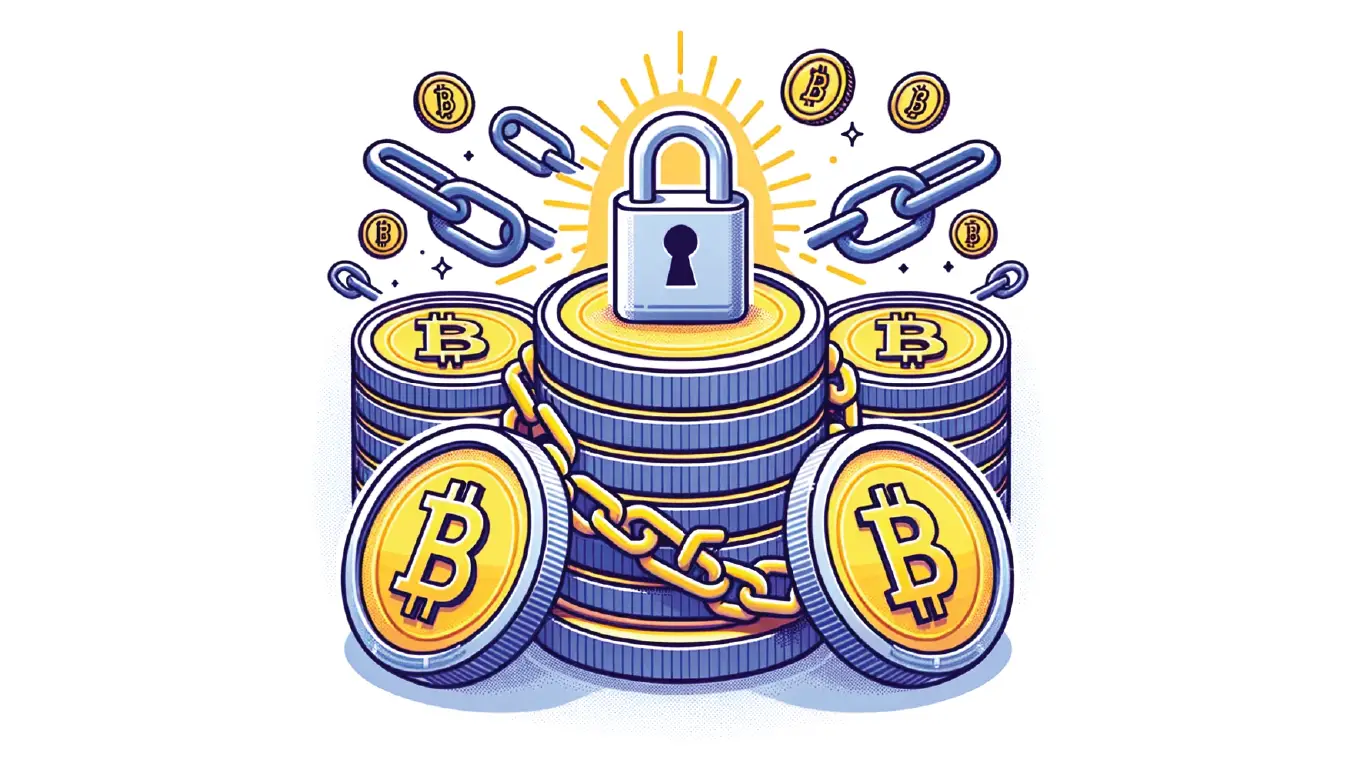
Lowering Barriers to Run Nodes
Protocols are optimized to allow average users to participate in the network by running nodes through solutions like light clients. Light clients do not require storing full blockchain data locally. This reduces hardware requirements and makes it economically viable for more participants to run nodes. With lower barriers to operating nodes, blockchains can enhance decentralization by making it easy for any interested user to join the network as a validator.
ASIC-Resistant Mining
Some blockchains are designed for ASIC resistance to promote decentralized mining. ASIC resistance maximizes the use of memory-hard consensus algorithms, which means crypto mining is open to more participants who can mine with consumer graphics cards. This prevents specialized ASICs from dominating the mining scene. More decentralized mining leads to healthier network effects and avoids the concentration of power with a few big mining pools.
➣ Security
Byzantine Fault Tolerance
Byzantine Fault Tolerance allows blockchain networks to achieve consensus and maintain security even with nodes failing or propagating false data. As long as the majority of nodes are honest, the protocol can reach a consensus despite dishonest actors attempting to compromise the network. Blockchains are designed to handle Byzantine failures through quorum requirements and game theory, making them resilient.
Quantum-Resistant Cryptography
With the advent of quantum computing, blockchains will need to transition to post-quantum cryptography to remain secure. Current public-private key cryptography will be rendered insecure by quantum algorithms. Algorithms like CRYSTALS-Kyber have emerged as promising quantum-safe alternatives. Blockchains must adopt such post-quantum cryptography to protect against attacks from quantum computers.
Formal Verification for Smart Contracts
The formal verification process mathematically proves the correctness of smart contract code to avoid bugs and vulnerabilities. Languages like Move provide built-in support for formal verification of program logic. For smart contract blockchains like Ethereum, formal verification is essential to prevent exploits. Rigorously verifying code enhances security for blockchain applications.
➣ Scalability
Sharding for Scalability
Sharding is a technique that partitions the blockchain network into smaller parts and parallelizes transaction processing across these parts (called shards.) This significantly improves blockchain scalability and throughput since consensus and validation can occur in parallel on multiple shards. Sharding demonstrates a key method of scaling blockchains while optimizing the trilemma.
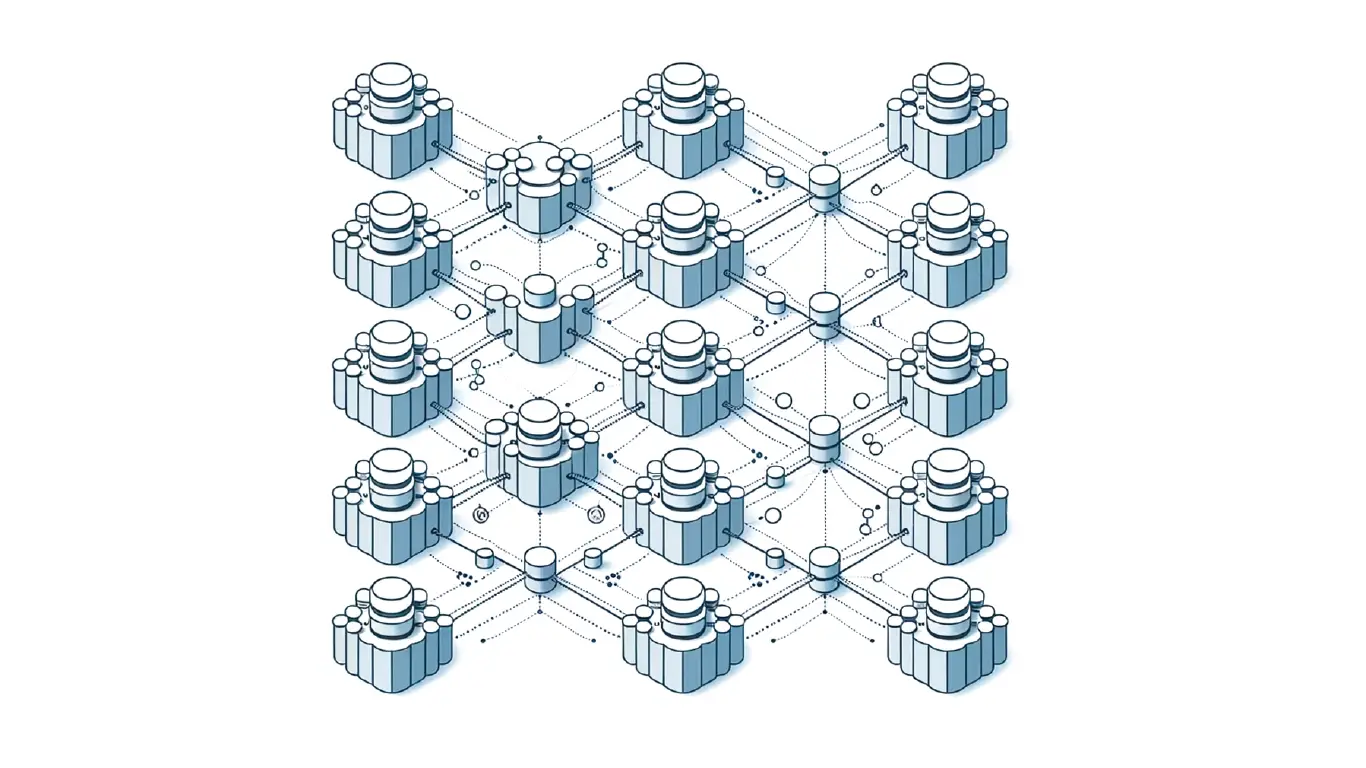
Layer 2 Blockchain
Layer 2 blockchain solutions like Plasma, state channels, and sidechains can move transactions off the main blockchain while leveraging its security. This decompresses the main chain and allows faster processing of transactions off-chain while minimizing risks. Only intermittent settlement transactions need to hit the main chain. Layer 2 blockchain solutions showcase how partitioning tasks can help blockchains scale efficiently.
Also Read: What is a Layer 2 Solution?
Asynchronous Transactions with DAGs
A DAG (Directed Acyclic Graph) is a data structure composed of nodes connected in a way that there are no cycles and the connections have a direction. Unlike a blockchain, which is a series of blocks linked linearly, a DAG is a distributed ledger technology that allows multiple branches to merge, enabling transactions to be added concurrently without the need for a single chain of blocks.
For Businesses: Navigating the Complexities of the Trilemma
The blockchain trilemma isn't just a theoretical conundrum; it has tangible implications for businesses looking to harness the power of blockchain technology. As with any technological adoption, a nuanced understanding is key to making informed decisions. By following certain strategies, businesses can chart an effective course.
➤ Establish Your Core Objectives:
Before diving deep into blockchain technology, businesses need to clarify their primary goals. Is transactional security, processing speed, or the trustless nature of decentralization most crucial to you? A single blockchain might not meet every need, but by identifying your core objectives, you can choose the best-fitting blockchain framework.
➤ Research and Evaluate Solutions
There are countless blockchain platforms and variations available today, each with its unique selling points. When evaluating these, businesses must consider the maturity of the platform, its community support, and how well it addresses the trilemma concerning their priorities. Engage with blockchain consultants or industry experts to gain insights tailored to your needs.
➤ Pilot and Prototype
Instead of committing wholesale, start with pilot projects. This allows businesses to gauge how the selected blockchain solution functions in real-world scenarios and its impact on the trilemma dynamics in practical applications.
➤ Stay Updated and Be Flexible
The world of blockchain is evolving rapidly. Solutions that might seem impossible today could become a reality tomorrow. Keeping abreast of these changes ensures that your business can adapt and shift its blockchain strategy as required.
➤ Consider Hybrid Solutions
It might be worth looking into hybrid blockchains, which combine the attributes of both public and private blockchains. These offer a middle ground and can be customized to cater more closely to your business requirements, potentially offering a better balance of the trilemma components.
➤ Educate Your Team
It's not just the top-tier decision-makers who need to understand blockchain and its intricacies. Ensure that your team, especially those directly interacting with the technology, is educated about the trilemma and its implications. This shared understanding can lead to more informed strategies and operational decisions.
➤ Engage with the Community
The blockchain community is vibrant, active, and always willing to share insights. Engage with them through forums, conferences, and workshops. This can offer first-hand knowledge of challenges faced by others and novel solutions that are in the pipeline.
➤ Risk Management
Given the dynamic nature of the trilemma and the ever-evolving landscape of blockchain, businesses should have robust risk management strategies in place. Regularly review and revise these strategies to ensure that your business remains protected as it navigates the trilemma waters.
To wrap it up…
Understanding the blockchain trilemma and its implications is crucial for businesses aiming to leverage blockchain's transformative potential. It's a multifaceted challenge that requires strategic thinking, continuous learning, and adaptability.
However, with the right approach and a deep understanding of one's priorities, businesses can effectively navigate the complexities of the trilemma and harness the immense power that blockchain offers.
If you need any help with your blockchain development or have a technical query that you need to resolve, feel free to contact us or pick our brains on a 15-minute call. We’d be happy to help!
Frequently Asked Questions
1. What is the blockchain trilemma?
The blockchain trilemma is a concept popularized by Vitalik Buterin that suggests blockchains can only optimize for two out of three factors: decentralization, security, and scalability. Enhancing one factor often results in compromising the others.
2. Why is the blockchain trilemma important?
The trilemma is vital because it represents a core challenge for blockchain development. Achieving a balance between decentralization, security, and scalability is crucial for the broader adoption and functionality of blockchain technologies.
3. What are some potential solutions to address the trilemma?
Various techniques include:
Decentralization: Incentive structures, lowering barriers to run nodes, and ASIC-resistant mining.
Security: Byzantine fault tolerance, quantum-resistant cryptography, and formal verification for smart contracts.
Scalability: Sharding, Layer 2 blockchain solutions, and asynchronous transactions with DAGs.
4. Why should businesses care about the blockchain trilemma?
Understanding the trilemma is crucial for businesses aiming to harness the transformative potential of blockchain. It can impact transaction speeds, security levels, and the overall trustworthiness of a blockchain-based system.
5. Are there any completely solvable solutions to the blockchain trilemma?
While the blockchain trilemma is not 100% solvable, various techniques and innovations can optimize it according to specific needs and priorities.
6. What is the significance of the blockchain trilemma for investors and developers?
Grasping the nuances of the trilemma can aid in making informed decisions when investing in, developing, or implementing blockchain solutions.

